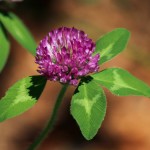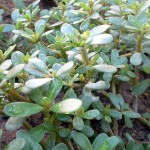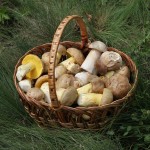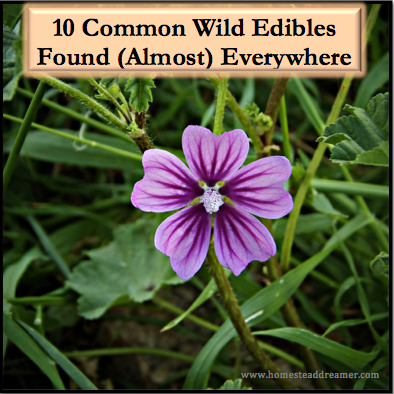Every now and then, I will ask the fans about topics they are interested in reading about. “Wild edibles” always comes up, without fail, and I usually gloss over it. Why? Because we all live in different parts of the United States, not to mention some of the fans are in Australia and the UK! There is no way I could write an article that covers it all (that wouldn’t turn into a book, anyway).
It is constantly requested so, I decided to take a different route and give the fans their wish. I created a list of some really common wild edibles that are found just about everywhere, in most climates, and on most continents.
***Whenever you are foraging wild edibles, be 100% certain that what you are harvesting is the plant you mean to. Many plants look very similar and the untrained eye can be easily fooled. The risk is simply not worth it so be sure. You can do that by having a book with color pictures for your area or going with someone who is experienced in foraging. Check Facebook and other social media for like minded people you may be able to go with and get some good hands on experience (and make a new friend!).

Clover/Red Clover – Clover grows the world over! Many people consider it more of a survival food but this wonderful little plants is 100% edible from the leaves and flowers all the way to the roots. The catch is that clover should be eaten fresh or completely dry. According to EatTheWeeds.com, clover should never be fermented, ever!
Dandelions – The fact that dandelions are edible is some pretty common knowledge. What most people don’t know is that the entire plant is edible. Now, I never said it all tasted good, but you can eat everything and will get a considerable shot of vitamins and minerals. Most people consider the dandelion as nothing more than a bothersome weed that they battle with every spring and summer. Truthfully though, the early shoots are very tasty in salads and the roots can be dried and powdered down to last through winter.
Cattails – Cattail plants are found all over the place where there are wetlands. Around lakes, streams, swamp edges, even in Alaska! All parts of the plant are edible, though some are recommended to be harvested at certain times of the year for better flavor. The roots can be powdered into flour.
Fireweed – Commonly found on the side of the road, fireweed is a tall plant that has beautiful flowers going up the stalk. Where I live, fireweed is everywhere. There are numerous uses for it from fresh shoots to the making of fireweed ‘honey.’ Two things I was taught as a child from the Alaskan Native elders who teach their culture to students: When all the flowers are gone on the plant, it is Fall, and that you can eat the ‘meat’ out of the stalk (not the skin, just the middle) and it tastes a lot like celery. It is a good way to hydrate if you run out of water.

Purslane – Purslane is something I just learned about this winter. Like many other edibles, this is an extremely common plant that is considered a weed. There is reportedly more nutritional value packed in purslane than any other ‘green’ out there. It grows everywhere and usually in large patches.
Berries – This one is kind of a no brainer but it is surprising how many people either forget they can get berries for free out in the wilds or, they forget that wild berry picking is foraging! Check for what you have available locally and be careful of several look alike berries that are poisonous. Always BE SURE!
Nuts – Just like berries, wild nuts are all over the place. The only difference is what variety and when to pick them (or gather them up) in your area. Roasted nuts will last longer than raw in most cases and is
Fiddlehead Ferns – This one has a lot of controversy surrounding it (though people were eating them long before we were all ‘civilized’) as there are many ferns that coil the same as the edible ferns do but are actually poisonous. Remember, if you aren’t sure about the identification, don’t risk it!
Violets – Wild violets are all over place and is considered a weed by some due to their self seeding. The flower petals and leaves are edible raw or cooked as greens. They are more of a spring plant as the heat of summer makes the flowers wilt and fall off.

Mushrooms – I hesitated to include mushrooms because of how many are poisonous versus edible. There are more mushroom varieties that are bad for you than good out there and the importance of confident identification cannot be stressed enough. Chances are good that there are some edible ones available in your location! A quick Google search can help you figure out what, when, and where!
SPECIAL MENTION
Coastal Areas:
Green Seaweed and Kelp
Sea Asparagus
Arid or Desert Regions:
Prickly Pear
Chia Sage
Agave
Wild Edible Sites
As with ANY foraging, be sure, be positive before you consume or even pick anything. There are plenty of sites out there (usually vegetarian) that have recipes and ideas on how to use these new (and free!) ingredients in your meals and snacks.





Also, Watercrest and Pokeweed 😀
Ha!! You’re right! Thank you for the additions to the list. 🙂
I used to love scavenging for this in the Spring with my grandmother. http://en.wikipedia.org/wiki/Phytolacca_americana
Poke Weed…or Poke Sallet
Thank you for adding to the list!!